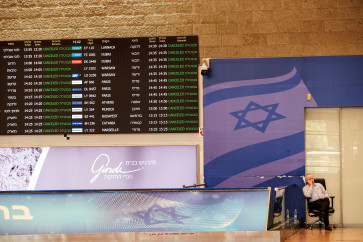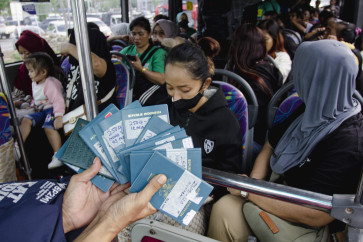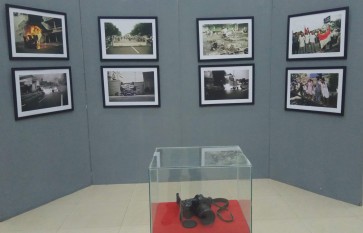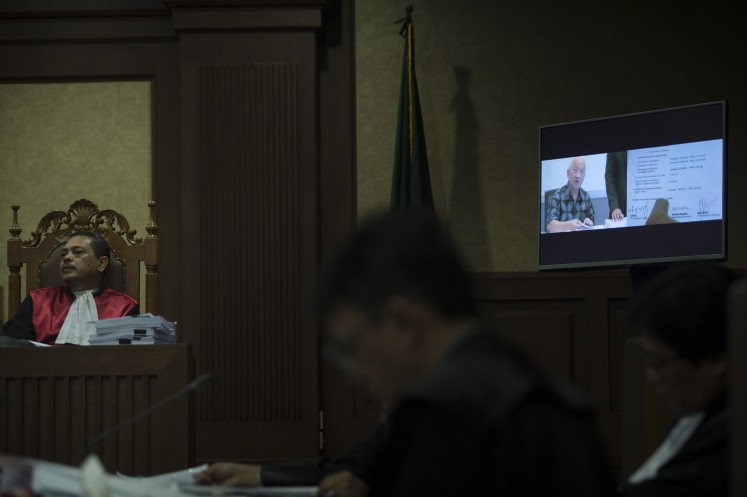Popular Reads
Top Results
Can't find what you're looking for?
View all search resultsPopular Reads
Top Results
Can't find what you're looking for?
View all search resultsPuzzling ‘hedonism’ of the poor
The image of so-called poor people’s happy faces at the Bantar Gebang dumpsite in Bekasi, West Java, is still very clear in my mind
Change text size
Gift Premium Articles
to Anyone

T
he image of so-called poor people’s happy faces at the Bantar Gebang dumpsite in Bekasi, West Java, is still very clear in my mind. It is really strange to see people being happy despite their utterly marginalized living conditions. Is this rational behavior?
Their household income stands only at Rp 20,000 (US$1.30) to Rp 50,000 per day. Most of their children can only access education at a private elementary school nearby.
They have no access to the state-run free healthcare scheme because they have no identity cards and rely on a small warung (small kiosk) to get medicine if they fall sick.
Both the Jakarta and Bekasi governments do not recognize them as residents, denying their children the right to birth certificates and free access to education.
Most of the families are trapped in a cycle of debt: they borrow money in the morning for their daily needs and pay it back in the evening with the proceeds that they make from garbage sales at an interest rate of 10 percent. This leaves them with little or no income and they just repeat the cycle the next morning.
Poverty has deprived them of many opportunities. But how can they feel happy? They say they are happy with a daily income that eluded them in their home villages, and living near caring neighbors with whom they can sometimes leave their children without worry.
Their consumption structure also implies that they use 40 to 50 percent of their daily income to self-indulge, such as buying cigarette for fathers and snacks for children.
They are also willing to pay for “expensive” services, such as daily loans to smooth consumption, or four to 12 week credit for non-food-products like new clothes or kitchen utensils that cost 30 to 50 percent more than market prices.
They believe that “it is our fate to be poor. It will never change. Why bother saving money”? Hence, “jangan pernah punya cita-cita, nanti kamu kecewa” (never have a dream or you will regret it) is common advice to their children.
Abijhit Banerjee, who authored Poor Economics, deems such thoughts as legitimate given the context of the poor’s living conditions.
He says, “Maybe a substantial part of the reason why the poor looks as if they’re making worse decisions is because they don’t care enough, and they don’t care enough because they really, probably rightly, see that their chances of getting somewhere very different are minimal.”
Nevertheless, there are cases of a family who transformed from slum to triumph. Many other cases, however, show some of the youth are “forced” to have a lifetime of regrets because their parents cannot afford to pay high school fees and relatives cannot loan them money.
It is of course very human to enjoy certain self-indulgences every now and then.
But it is a problem if it becomes a daily habit. This way of thinking is not legitimate and such behavior indicates hedonistic style among the poor.
The Oxford Dictionary defines hedonism as “the pursuit of pleasure; sensual self-indulgence”.
For middle-income people, this could be about going to a spa, overseas travel or fine dining at fancy restaurants.
For the poor, it can be cigarettes, candy and snacks to make children smile or new clothes.
Among the commodities that contribute to the poverty line in the urban context are rice (21 percent), prepared food (16.45 percent) and cigarettes (11 percent). This year, the bread line is set at Rp 400,000 per person per month or Rp 1.6 million per month for a family of four.
If we assume the father quits smoking and the mother cooks more to cut the expenditure on prepared food to only 10 percent, a family will be able to save about Rp 280,000 per month or Rp 3.36 million per year.
If they do it consistently since their children are aged 5, they might be able to send them to high school or university.
It is everyone’s right to enjoy a “hedonic” lifestyle, but it is not fair if it deprives their children from opportunities to fulfill their dreams.
Therefore, we should add inclusive inspirational activities to poverty alleviation programs. It can be as simple as a stand-up comedy open mic session, monthly storytelling or movie screenings, or even dangdut music performances and talk shows in slum areas or poverty zones where everyone — including scavengers, cart men, the homeless and those without resident documents — can watch.
Inclusive financial institutions can be there too to help the poor to open up savings accounts. This can inspire the poor to fight the misperception that poverty is a destiny.
Of course we need conditional cash transfers, free health care, subsidized rice programs, etc.
But beyond that we should inspire, educate and make them understand that to see their children involuntarily give up on their dreams due to the poverty trap is sadder than seeing their kids cry today because they did not get candy.
________________________
The writer teaches the economics of poverty at the Faculty of Economics and Business, University of Indonesia (UI), and is currently the project leader of ukmindonesia.org, a licensing and business information hub for SMEs, at LPEM UI.









